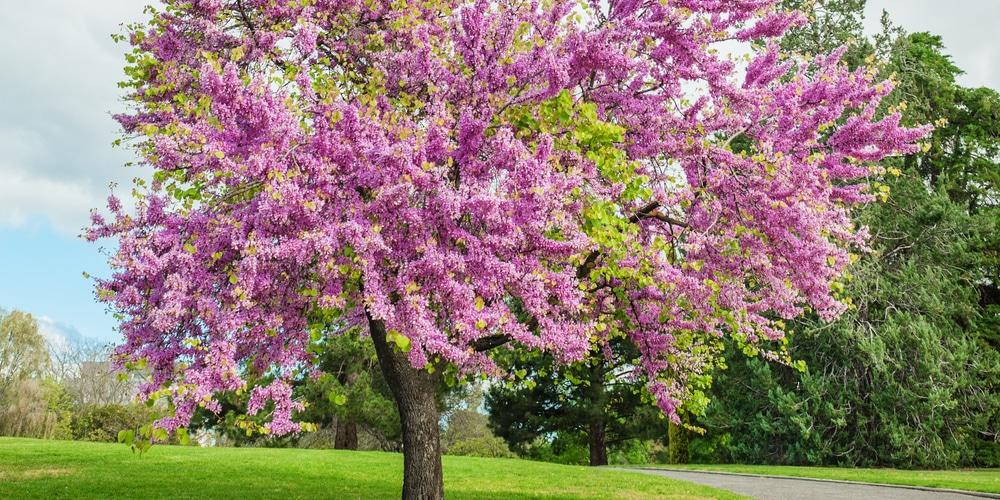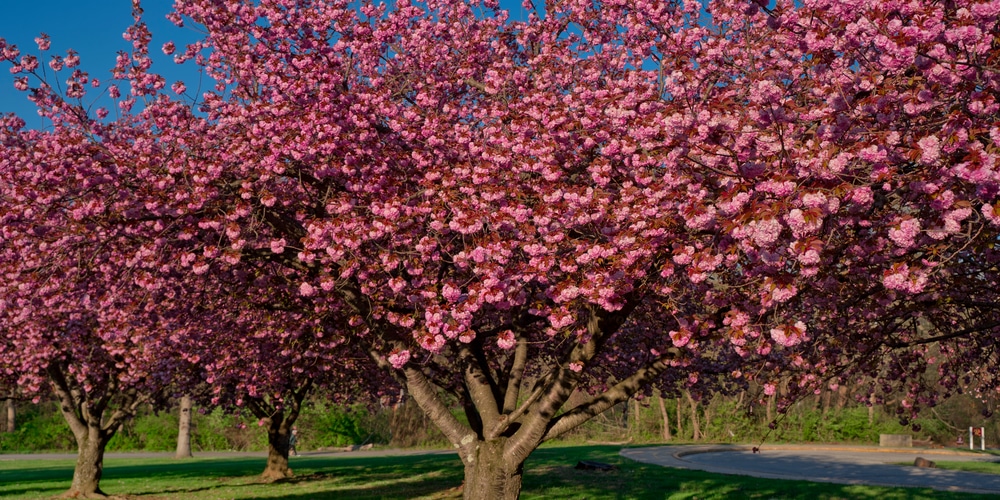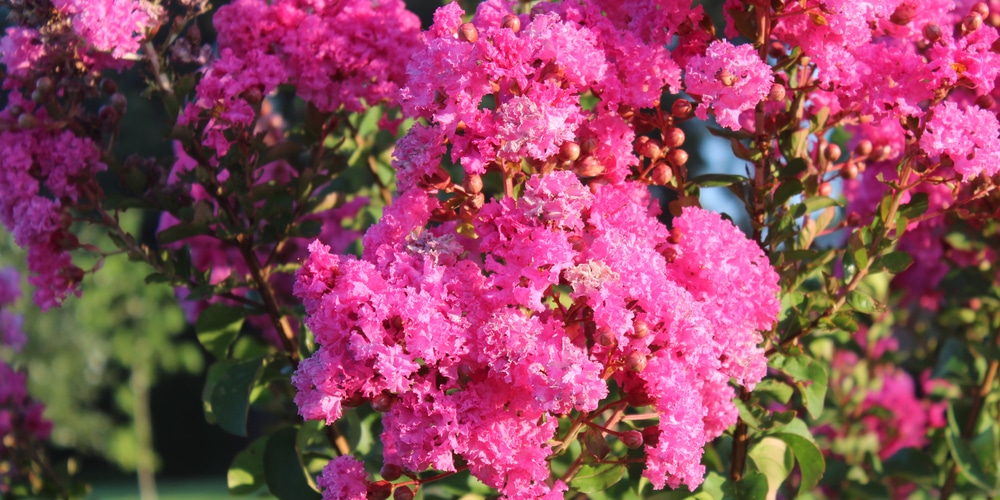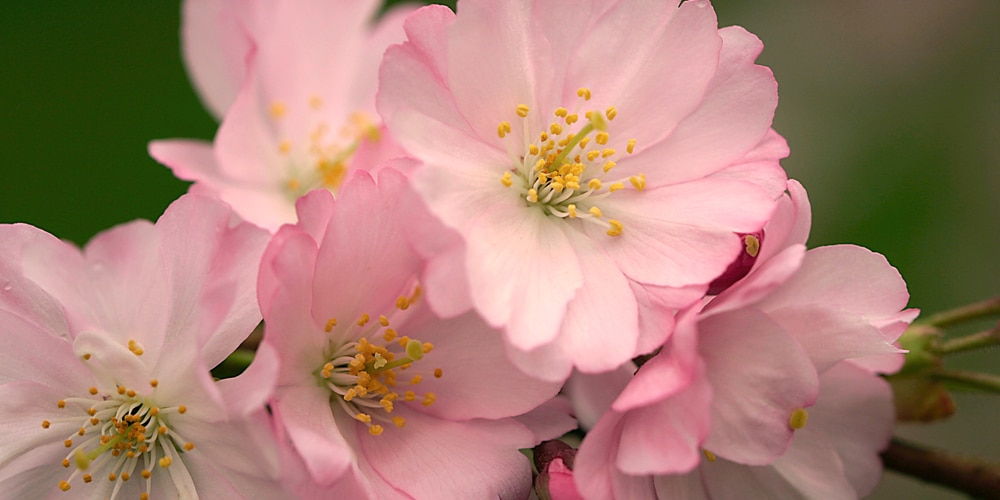If you are looking for the best tree with pink flowers Texas can nurture, you might want to decorate your garden with poetic shapes and colors. And pink is the color of tenderness. Nothing can beat a pink cloud of leaves waving goodbye or its flowers in welcome!
What are the pink flowering trees in Texas? The lowest USDA cold hardiness zone for Texas is 6a. So, the flowering trees have to survive the cold winters before their blooms bring you some joy. Some of the best cold-hardy trees with pink flowers for Texas’ climate include the Desert Willow, Chaste tree, and Texas Redbud.
But there are actually more! Let’s see some of the best candidates for your landscaping and gardening projects.
Pink Flower Trees Texas
Okay, we have not listed every tree with pink flowers Texas has seen or will ever see. But hey, we have prepared 6 species for you to have the best garden in the whole district!
1 – Amelanchier Robin Hill
This specific cross between the Amelanchier Arborea and the Amelanchier Laevis makes delicate, pale pink flowers. Notably, it has a straight trunk and leader. You can prune it to reduce its size, and the plant will adapt without making any fuss out of it.
In the fall, the flowers will turn into edible berries. But picking them might be harder than other fruit plants because they get ripe in different intervals. Usually, this tree with pink flowers in Texas later attracts birds who feast on its fruits and sing cheerfully afterward.
2 – Cercis Canadensis
The Eastern Redbud is another small deciduous tree you can add to your garden. In brief, it produces very showy purplish-pink buds that catch the eye from miles away. This native tree to North America lives everywhere from northern Mexico to southern Canada.
In many states, it gained the status of one of the top pollinator trees—even in Ontario, by the way. Some varieties can also produce gorgeous salmon-pink flowers. More importantly, these trees with pink flowers in Texas exhibit cauliflory. In other words, the flowers bloom straight on the trunk and branches. It is a show-stopper!
3 – Crabapple Adams
Hardy to zone 4, the Crabapple Adams captivates even the hard of heart. Its pretty flowers blossom in April. And if you do not like its natural coral pink blooms, you can choose among several different types of crabapple trees.
What makes the Crabapple Adams the ideal tree with pink flowers for Texas? In short, this tree is drought-tolerant and a full sun lover. Plus, its flowers have an inviting scent that turns into edible fruits (crabapples). You will enjoy plenty of red crabapples from fall till winter!
4 – Crape Myrtle
Lagerstroemia Indica belongs to the Lythraceae family, which means this tree does not get as big as most ornamental trees. Hardy to USDA zone 7, the crape myrtle produces neon pink flower clusters with yellow stamens.
You can also propagate them in Texas’ harsher zones if you cut off some switches in early winter. All in all, they are tough plants that come in different colors and sizes to help you achieve the ultimate aesthetic look.
5 – Magnolia
The Magnolia family includes countless varieties. And most of them produce pink flowers that range between a rose quartz color and a shocking pink. Of course, the best magnolia tree with pink flowers Texas can allow you to grow depending on your local climate. But most varieties adapt to zones 4-8. So, you should have no problems finding one that suits your needs.
Some varieties, like the Southern Magnolia, also prefer humid environments. But you can find plenty of hybrids and new species that will adapt to your backyard and provide the cozy atmosphere they create.
6 – Prunus Accolade
Arguably, the most beautiful tree with pink flowers Texas can have is the Accolade cherry. And for most growers, cherry blossoms are beyond description. Think of the Japanese people who love this tree so much they dedicated a whole season/activity to watching these flowers (Hanami).
The Prunus serrulata is the most common species of Japanese cherry. Instead, the Prunus Accolade comes from England. The latter is a more cold-hardy plant and can live in USDA zones 4. So, it is better suited for Texas’ rough winters.




